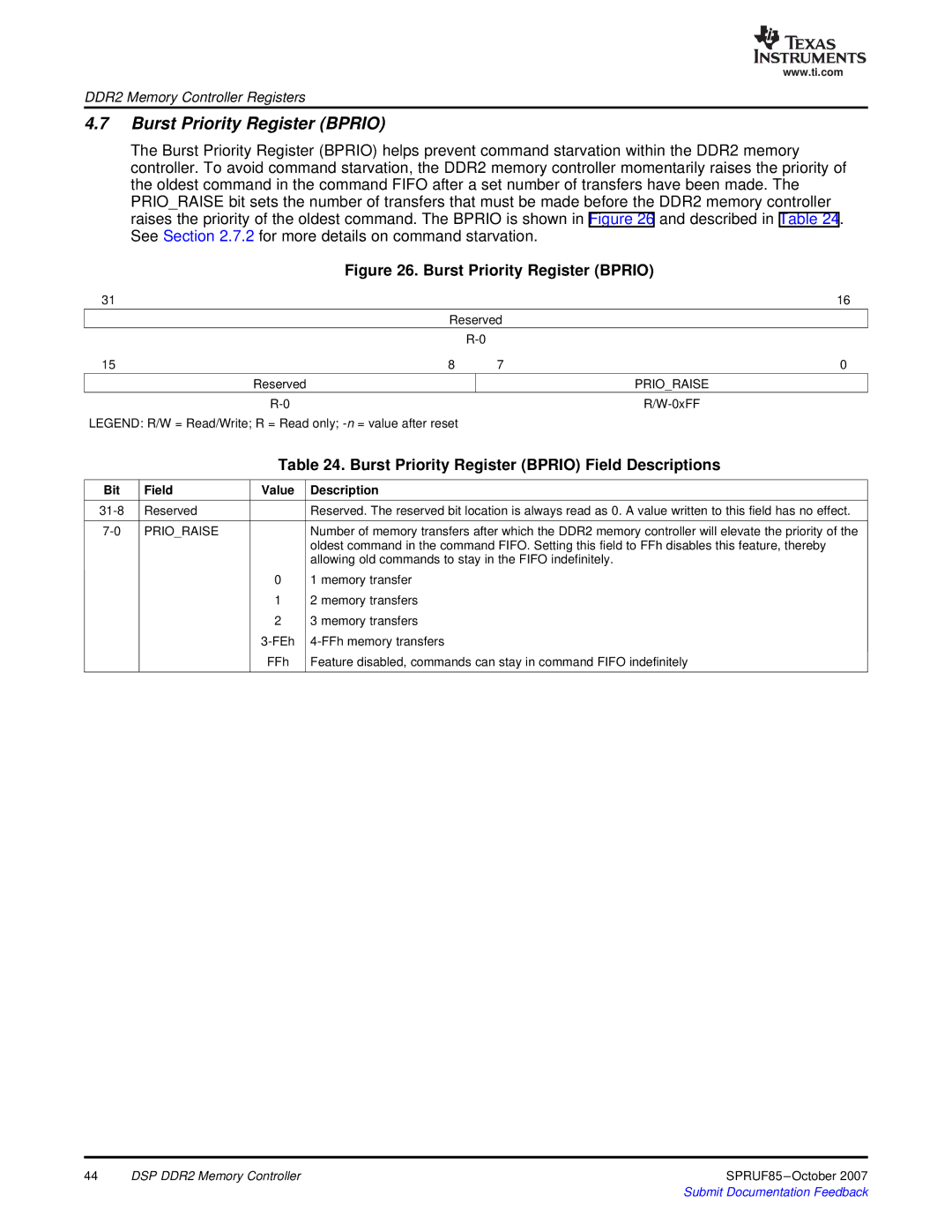
www.ti.com
DDR2 Memory Controller Registers
4.7Burst Priority Register (BPRIO)
The Burst Priority Register (BPRIO) helps prevent command starvation within the DDR2 memory controller. To avoid command starvation, the DDR2 memory controller momentarily raises the priority of the oldest command in the command FIFO after a set number of transfers have been made. The PRIO_RAISE bit sets the number of transfers that must be made before the DDR2 memory controller raises the priority of the oldest command. The BPRIO is shown in Figure 26 and described in Table 24. See Section 2.7.2 for more details on command starvation.
Figure 26. Burst Priority Register (BPRIO)
31 |
|
| 16 |
| Reserved |
| |
|
|
| |
15 | 8 | 7 | 0 |
Reserved |
|
| PRIO_RAISE |
|
| ||
LEGEND: R/W = Read/Write; R = Read only;
Table 24. Burst Priority Register (BPRIO) Field Descriptions
Bit | Field | Value | Description |
Reserved |
| Reserved. The reserved bit location is always read as 0. A value written to this field has no effect. | |
PRIO_RAISE |
| Number of memory transfers after which the DDR2 memory controller will elevate the priority of the | |
|
|
| oldest command in the command FIFO. Setting this field to FFh disables this feature, thereby |
|
|
| allowing old commands to stay in the FIFO indefinitely. |
|
| 0 | 1 memory transfer |
|
| 1 | 2 memory transfers |
|
| 2 | 3 memory transfers |
|
| ||
|
| FFh | Feature disabled, commands can stay in command FIFO indefinitely |
44 | DSP DDR2 Memory Controller | SPRUF85 |
